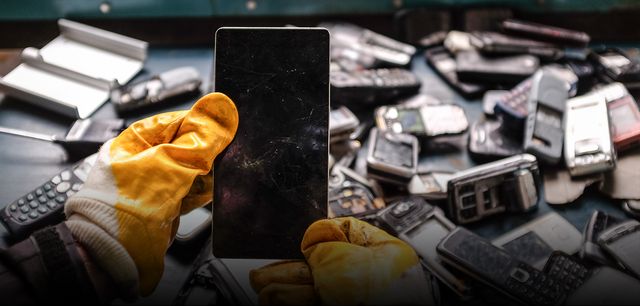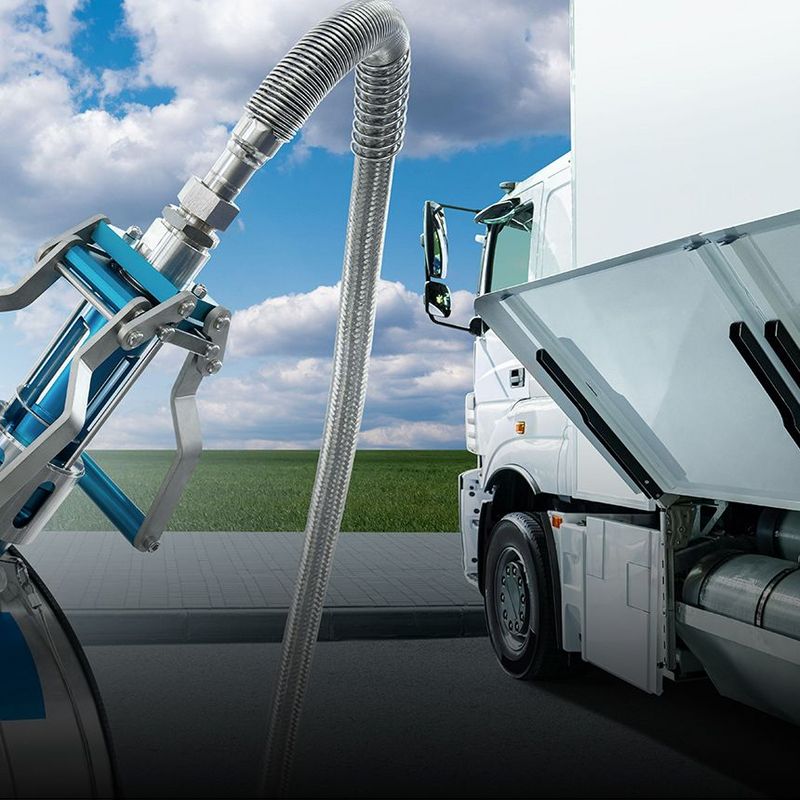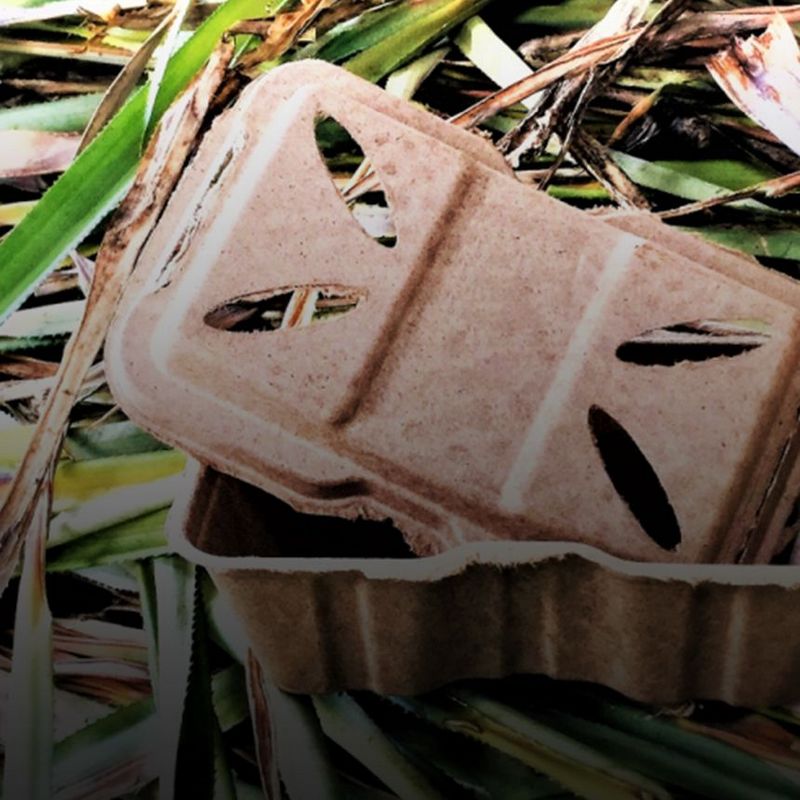14. April 2022
Blenders, toasters, smartphones and washing machines are often not disposed of properly. Read on to find out why electronic waste is a global problem, how things stand with recycling in Germany and where you can get rid of old appliances for free.
Environmentalists sounded the alarm at the end of last year: according to the estimates of the WEEE (Waste Electrical and Electronic Equipment) Forum, the global electrical and electronic waste mountain had grown to historic proportions, at around 57.4 million tons. This means that the world’s discarded smartphones, monitors, washing machines and refrigerators now weigh more than the Great Wall of China. The rampant growth of this mountain of junk is primarily down to increasing consumption levels and the short service of life of devices, which are also often hard to repair. The experts estimate that, if this trend continues, the mass of accumulated electric and electronic junk could tip the scale at 74 million tons by 2030.
According to the Global E-Waste Monitor 2020, which is published by UN research institutions, among others, the highest volume of e-waste is currently being generated in Asia. In 2019, the figure for Asia was 25 million tons, accounting for 46 percent of the global total by volume. Twelve million tons were generated in Europe over the same period, two million of them in Germany. But when it comes to the per capita share, Germany, like other industrialised nations, is way ahead of the pack. According to the researchers, almost 20 kilograms of waste were produced per head of population in Germany over this period: almost forty times more than in the African state of Malawi and 2.5 times as much as the global average.
Precious, yet deadly for the environment
The fundamental problem here is that, according to the experts’ data, only 17.4 percent of the world's e-waste is collected and recycled. The lion’s share, in contrast, simply ends up in landfills or is burned, along with the materials contained in the devices, which include valuable resources such as gold, silver, copper and platinum, but also climate-damaging and toxic substances like mercury. According to the researchers’ estimates, around 50 tons of this toxic heavy metal were contained in undocumented e-waste streams in 2019 alone.
As the report points out, global e-waste is also driving climate change: it claims that discarded refrigerators and air conditioning units emitted nearly 100 million tons of carbon dioxide-equivalent in 2019, accounting for 0.3 percent of global greenhouse gas emissions.
© iStockWhere to put disused mobile phones? You can hand them in at electronics shops, online retailers or - new from July - at supermarkets. Alternatively, donate them!
Collection targets in Germany missed
Many devices are still being disposed of incorrectly in Germany too, according to the Federal Environment Agency (UBA). Small appliances such as electric toothbrushes often end up in general waste or the yellow recycling bin, while old appliances like washing machines and commercially used electrical equipment all too often end up in non-certified scrap yards or being hauled away by unregistered scrap collectors. As a result, in 2019 only 44.3 percent of decommissioned electrical appliances in Germany were properly collected. Compared to the global average, this may not sound all that bad – but it is a far cry from the minimum collection target of 65 percent which has been in force in all EU countries since 2019.
The scheduled improvements include new take-back obligations for retailers which will come into force this year. From 1 July, supermarkets in Germany will also have to take back electrical appliances. Consumers will in the future be able to dispose of their old devices when they go for their weekly shop: that, at least, is the hope of UBA president Dirk Messer. According to the head of the environmental authority, however, traders, manufacturing companies and municipalities will have to go above and beyond the new regulations and further expand their collection and take-back options, for example, by making recycling centres more accessible or offering more flexible take-back times.
Where to get rid of old electrical appliances for free
The crossed-out bin symbol found on electrical appliances makes it clear that they should under no circumstances be disposed of with normal household waste! The same thing applies to LED and energy-saving lamps and fluorescent tubes. Old electrical appliances can be handed over free of charge at municipal recycling centres. Smaller pieces of equipment can also be taken for disposal to the mobile hazardous substance or e-waste collection services which travel around rural areas on a fixed schedule. Many local authorities also offer a collection service at the same time as they pick up bulky items. The electrical appliances must then be registered accordingly with the bulky waste.
Small electrical appliances of up to 25 centimetres in length – such as mobile phones, toasters, razors and electric toothbrushes – can be handed in free of charge to electronics stores and online retailers, and, from 1 July, to supermarkets, regardless of whether you purchased the device there or even want to buy a new one! This applies to shops and online retailers with a sales or storage area of at least 400 square metres and to supermarkets with an area of 800 square metres or more which at least occasionally sell electrical appliances. Online retailers must set up return points which don’t require the consumer to travel an “unreasonable” distance. Some retailers offer free return shipping as an alternative.
For larger devices, the new-for-old principle applies. If you buy a new TV, printer or washing machine, the old appliance must be taken back free of charge. The same applies also to delivery. In this case, you must specify when ordering that the delivery service is expected to take an old appliance away with it. Since 1 January 2022, online retailers have been obliged to actively point out the free collection option.
LED and energy-savinglamps and fluorescent tubes can be returned to municipal collection points, but often also to retailers. Nearby collection points can be found on this website.
Instead of hoarding discarded mobile phones in a drawer for years, consumers can also now donate them to non-profit organisations, such as NABU or Deutsche Umwelthilfe.
Where recycling needs to improve
According to the Federal Environment Agency (UBA), iron, copper and aluminium are already being widely recycled. The situation is different for precious and special metals such as tantalum or rare earths. These only occur in small quantities in devices and are often embedded in complex structures. According to UBA, a ton of mobile phones contains about 250 grams of gold – fifty times as much as a ton of gold ore. Improvements in shredding and sorting technologies could increase the yield of these metals. In the ideal scenario, however, relevant components such as printed circuit boards or connectors would be dismantled manually before shredding more often than is currently the case.
According to the Environment Agency, there is also room for improvement in the disposal of screen devices, such as LCD TVs and monitors. These are usually collected in large containers, becoming damaged in the process. This makes further recycling more difficult, and toxic substances like mercury can also escape.
The major problem from UBA’s point of view is that old refrigerators often end up in the hands of illegal scrap collectors. If they remove the compressors to extract the copper they contain, the climate-damaging coolant escapes unhindered into the atmosphere. Due to the cost pressures to which some professional recycling plants are subject, even these plants do not always guarantee the complete removal of CFC-containing coolants.
Right to repair
Repairing refrigerators, dishwashers or tablets is often more expensive than buying new ones. The EU is however determined to change this. Since March 2021, an ecodesign directive has been in force in Europe in line with the principle of “repair instead of throwing away”. Manufacturers of large household appliances must ensure that spare parts are available for seven to ten years. What’s more, they have to build their products in such a way that they can be taken apart with conventional tools without breaking anything. The German government has considered extending the “right to repair” to smartphones, laptops and electric toothbrushes.




